Part Analysis
| General Data | |
| Manufacturer (OEM) | CWT |
| Platform | CTT |
| PCB Type | Double-Sided |
| Primary Side | |
| Transient Filter | 4x Y caps, 2x X caps, 2x CM chokes, 1x MOV |
| Inrush Protection | 2x NTC Thermistor SCK-0510 (5Ω @ 25°C) & Relay |
| Bridge Rectifier(s) |
2x WeEn WNR2560M
|
| APFC MOSFETs |
2x Infineon IPP60R060P7 (650V, 30A @ 100°C, Rds(on): 0.06Ohm) &
2x Infineon IPB60R045P7 (650V, 38A @ 100°C, Rds(on): 0.045Ohm) |
| APFC Boost Diode |
2x Vishay C10ET07T (650V, 10A @ 125°C)
|
| Bulk Cap(s) |
3x Nippon Chemi-Con (420V, 820uF each or 2460uF combined, 2000h @ 105°C, KHE)
|
| Main Switchers |
4x Alpha & Omega AOTF29S50 (500V, 18A @ 100°C, Rds(on): 0.4Ohm)
|
|
IC Driver |
2x Novosense NSi6602 |
|
Digital Controller |
2x Texas Instruments UCD3138A |
| Topology |
Primary side: Semi-Digital, Interleaved PFC, Full-Bridge & LLC converter
Secondary side: Synchronous Rectification & DC-DC converters |
| Secondary Side | |
| +12V MOSFETs | 16x OnSemi NTMFS5C612N (60V, 168A @ 100°C, Rds(on): 1.5mOhm) |
| 5V & 3.3V | DC-DC Converters: 2x QM3054M6 (30V, 61A @ 100°C, Rds(on): 4.8mOhm) & 2x QN3107M6N (30V, 74A @ 100°C, Rds(on): 2.6mOhm) PWM Controller(s): uP3861P |
| Filtering Capacitors | Electrolytic: Nippon Chemi-Con (4-10,000 @ 105°C, KY), 4x Nippon Chemi-Con (W) 4x Rubycon (3-6,000 @ 105°C, YXJ),Polymer: 7x FPCAPS, 40x Nippon Chemi-Con |
| Supervisor IC | IN1S3151 – SAG |
| Fan Model | Sunon (MFE0251VX-1Q010-S99) (140mm , 12V, Magnetic Levitation Bearing) |
| 5VSB | |
| Rectifier |
1x PS1045L (45V, 10A) SBR
|
| Standby PWM Controller | On-Bright OB2365T |
The PSU uses CWT’s CTT semi-digital platform. I have encountered this platform several times so far, with the two most recent PSUs being the XPG Cybercore II 1300 and the MSI MEG Ai1000P PCIe5. The MSI MEG Ai1300P PCIe5 also uses it. This might not be a fully digital platform since some of its circuits use analog controllers, with only the APFC, main FETs, and 12V FETs controlled by MCUs. Still, this platform has potential and, through careful tuning, can achieve sky-high performance.
The build quality is high, with Japanese caps, quality FETs, and a top-notch Sunon fan using magnetic levitation bearing, which is highly tolerable to increased temperatures. At the same time, it doesn’t have the annoying bearing noise of a double ball bearing at low speeds. Two MCUs by Texas Instrument handle the PSU’s vital functions, leaving only the minor rails and 5VSB handled by analog controllers. If the rails mentioned above were digitally controlled, too, we would talk about a fully digital PSU and not a semi-digital one. So far, I haven’t encountered a fully digital PSU, and I am not sure when this will be the case since the technology in power supplies moves at an extremely slow pace compared to other PC parts, like CPUs and GPUs.
The soldering quality is not the best I have seen by CWT, which used large, enhanced PCB traces and copper pieces to lower energy losses. I have also noticed six shunt resistors on the PSU’s secondary side, which provide current information on the digital controllers required for the unit’s protection features, among others. The cable leaving from the PCB holding the AC receptacle and the first part of the EMI filter used to transfer a signal to a vertical board used by the 5VSB circuit doesn’t look like the most elegant solution, but it is an afterthought. This signal should pass through the PCB, but changing the platform’s design would be costly, and this small change didn’t justify it.
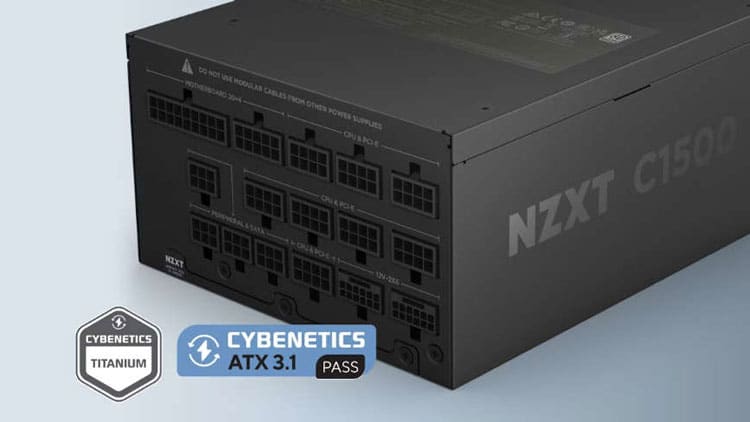

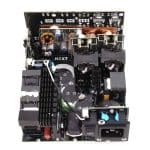
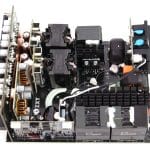
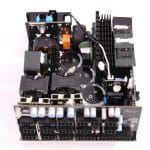
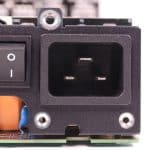
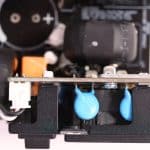
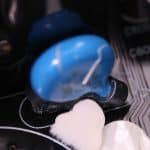
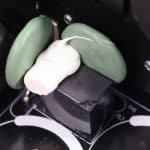


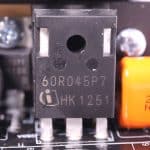
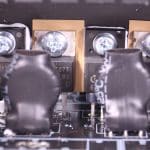

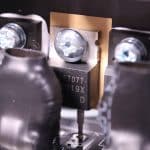
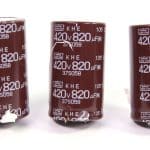
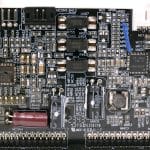
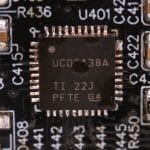
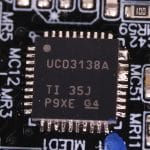
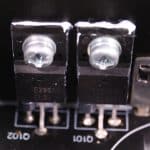
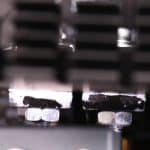
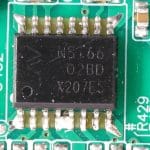
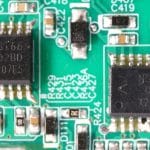
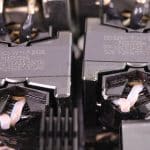
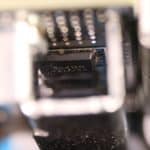


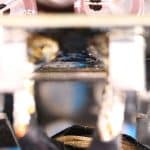
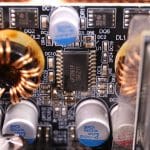
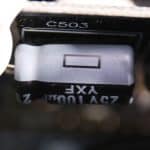
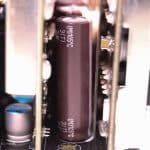
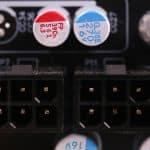
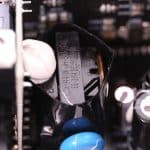
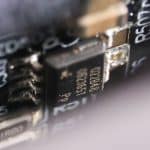
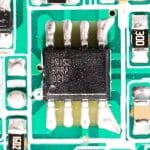
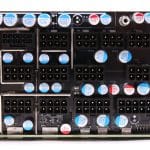
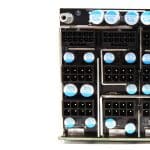
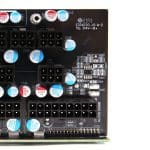
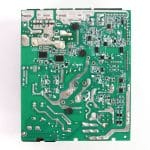
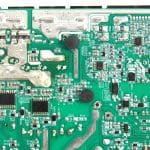

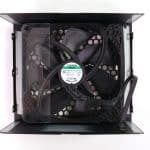
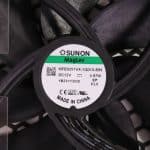

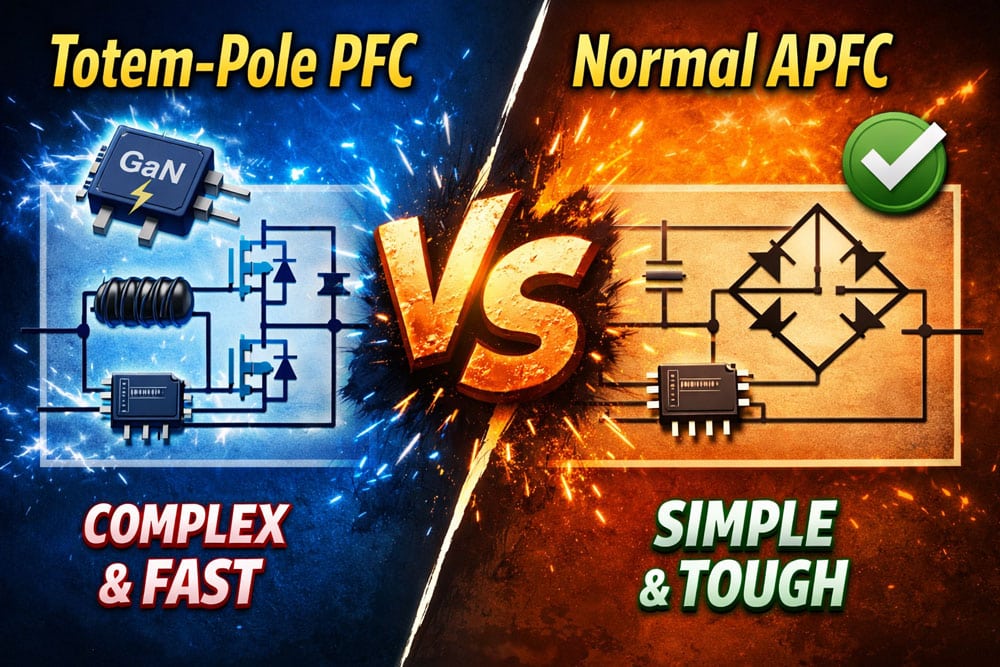
I fully agree with Crmaris’s perspective. The 80Plus certification not only lacks authority but also demonstrates significant irresponsibility toward consumers. The global market is flooded with counterfeit 80Plus power supplies, yet the organization turns a blind eye to this issue, ultimately deceiving consumers.
It must be acknowledged that the introduction of 80Plus made substantial contributions to energy efficiency — this is an undeniable fact. However, 80Plus has now become obsolete. Today, the most rational and reliable efficiency standard and certification system is unequivocally Cybenetics.
C1500 for 295€
HX1500i 2025 for 267€
any reason to pick the c1500 and pay 28€ more?
Thanks a lot for your in-depth reviews!
Just a quick question, which PSU is better: NZXT C1500, or Seasonic Vertex PX-1200, if I want to use it with a Seasonic 12V-2×6 90° cable (this one: https://seasonic.com/native-12v-2×6-cable-90-degrees/)?
Thanks!
Hi! The C1500 belongs to a higher-class than the PX-1200.
hi
mind you give me an affiliated link to this psu for amazon spain so you can get something in return? ty
Hi there! Normally this link will lead you to the amazon store that handles your region.
https://amzn.to/4bvU7Ef
Thank you!!
Just picked up the c1500 and noticed the 12vhpwr pins wobble in and out a bit. Is this normal and safe to plug into my 5090? My lianli Strimer 12vhpwr cable doesn’t do this. Thank you I would appreciate a quick response as my parts are just sitting here.
Everyone said it was ok so imma just send it and give it a try until my Asrock psu gets here. Love to hear from you still thank you.
Since no answer I’ll be returning the Nzxt for the Asrock pg1600 since it has the gpu temp guard cable. Also the Nzxt 12v pins were like Jayz in his video and I’m nervous about this. Either way the Asrock is cheaper and seems to be well regarded.
it depends on how much they wobble. This cable is the only electrically compatible in PSUs, meaning that you can use another cable, given that your PSU has 12V-2×6 native header.
Curious if this PSU helps mitigate the melting cable issues anymore so than other 3.1 PSUs? In their FAQ they mention:
“The C1500 Platinum ATX 3.1 PSU is equipped with comprehensive protection features to help prevent connector-related issues. It includes digital power monitoring for precise voltage regulation, Over Current Protection (OCP) that monitors individual rails, and Over Temperature Protection (OTP) that helps prevent thermal issues. These protections work together to automatically detect and respond to any power distribution anomalies before they become dangerous. The unit also uses high-quality 105°C Japanese capacitors for enhanced reliability and thermal performance.”
No expert by any means on PSUs so I’m wondering – are any of these terms (digital power monitoring, OCP, OTP) going to actually prevent cable melting? I think I saw OCP/OTP mentioned in your other PSU reviews so I’m doubtful but figured it wouldn’t hurt to ask!
Going to pick up this PSU either way as it’s a phenomenal price for the wattage/noise PLUS ATX 3.1 and not 3.0.
Hi! It is a very good PSU, especially for its money, but no it won’t save you from melting connectors if anything goes wrong. The GPU should have this kind of protection at the first place I am afraid.
Hey! I read a bad reviews for NZXT C1200 Gold because terrible coil whine. How about this C1500?
on the Chromas it was fine. Coil whine also has to do with the rest system parts.
So the C1500 itself doesn’t produce coil whine, if I understand correctly? Thanks for your answer.
coil whine is a difficult topic. It has to do with the rest hardware of the system which can make things worse.
Hi Aris,
I bought a NZXT C1500, and it worked fine for 2 days. On the 3rd day I went to turn on my computer in the morning and only the ram memory rgb would turn on, but the system wouldn’t boot, the cpu fan would not spin, but I would hear a “click” sound everytime I pressed the power button. I removed the PSU and did the paperclip test and the PSU fan would not spin, but I hear the click noise. I installed my old PSU and my computer turned on just fine. So I sent the PSU back to amazon for a full refund, and I’m planning on getting another new one.
Do you know what probably happened to the PSU?
Thank you!
Are you sure is the PSU’s fault? Because I have the same issues in a system, and it is the mainboard that suddenly decided not to “like” the PSU. In general I hear that DDR5 can also cause this, especially in AMD systems.
Thanks for replying Aris. Well, my system is AMD and I have DDR5, so it fits what you said, but what makes me think it’s the PSU fault is because I disconnected it from the mainboard and did the paperclip test on pins 4 and 5 of the 24pin cable connector, and the PSU fan did not start spinning (I made sure to turn the zero fan switch off), this would isolate the problem with just the PSU, unless the paperclip test is not indicative the PSU is not working properly.
for me, take a plain PSU tester, which will come in handy in the future as well. Now if you indeed de-selected semi-passive mode, the PSU’s fan should start. Make sure everything is disconnected from the PSU, only the 24-pin cable is on!
https://www.amazon.com/Computer-PC-Tester-Connectors-Enclosure/dp/B076CLNPPK/
Hello Aris, so I returned my C1500 to Amazon and they gave me a full refund, so I bought a PSU tester like the one you linked and I bought a new C1500 that just came in today. I put it on the tester and the readings seems to be tight except for the PG timing which is measuring 90ms, I did read on Corsair website that the normal for PG is between 100ms and 500ms. Do you think I should be concerned? Thank you.
I had this exact same problem as well(NZXT C1500, Ryzen 9950x, MSI x870e carbon wifi). The solution that worked for me was to go to the BIOS and under ‘Power management setup’ change the ‘Restore after AC loss’ setting to ‘Always ON’. Now whenever I switch on my UPS the system starts automatically. I do not have to press the power button at all. I thought the issue was with my PC case power button so I tried to bypass it and this method has worked for me.
I have a question also – In the night the input voltage of my apartment(in India) goes up to 250V. Will this high voltage damage the PSU(NZXT C1500) in any way?
Hello i would like to get your advice. I will upgrade soon from my Dark Power Pro 11 550W which is now running in my system for almost 10 years. I need the best PSU for my 9950X3D + RTX 5090 workstation build i plan to do in a few months when the parts are available.
At first I wanted to get the FSP Hydro Ti Pro 1000W for 250€ but maybe i want a little bit more power. Currently looking at the NZXT C1500 which i can get for just 300€ which seems like a great price and the Prime TX-1300 which is significantly more expensive at 450€. Is there a reason why its so much more expensive and is it justified and worth the extra cost for critical work on the machine ? I am also skeptical about the low price for the C1500. There has to be a reason why its so cheap for a good performing 1500W unit.
I would appreciate your input here. Thank you!
The C1500 is a fine choice.
Thank you for the quick reply. That was my favorite choice too but i also like the additional quality characteristics i get with the TX-1300
I tried to understand why the Prime TX-1300 is much more expensive with 450€+ compared to 300€. It seems to me that it comes with extra cable combs to shape the cables, extra velcro straps, additional cable ties and also a ATX 24PIN 90° Adapter that is a PSU tester at the same time. The cables also seem to be less stiff and way more flexible than the cables included with the C1500. Sounds like great additions to me.
Is the 12V Voltage sag during the “Off to Full Load Turn-on” transient response or the mediocre 3.3V transient response something that can cause actually cause issues in a system or that nothing to worry about at all even when running that thing for many years ?
Thank you for your insight!
NZXT C1500 vs ASRock PG 1600G (Phantom)?
Tough, it depends on the prices.
NZXT C1500 – $ 360
ASRock PG 1600G – $ 300 + TAX
it prices are similar I would probably go for the C1500. I need to review the PG 1600G, to have the complete picture.
Thanks for the reply!
Will wait for your review before making a final decision.
Saw your video on YouTube:
https://youtu.be/8y46KiK3qF8?si=ZoTQTHx6x-f_GHED
So, you already have a PG 1600G. I hope to see your review on it soon.
How about NZXT C1500 ($ 370) vs ASRock TC-1650T ($ 500)?
The only thing I don’t like about NZXT PSUs is their connecting cables.
They are quite stiff and difficult to manage.
However, the PG 1600G has the same type of cables for the motherboard and 12V-2×6 connectors.
Have the C1500 , 12v rail reading , 11.872v no load , OCCT , HWiNFO64 and BIOS , with normal load , 11.760v and OCCT 11.704v for 10 minutes and OCCT GPU load on my 4090 11.778v .
Also I have a FSP PTM PRO 1200W , used for a year , its 12v rail is 12.040v no load ,with load 11.812v , RTX4090 12v 11.99v to 12.050v.
My spec are ASUS X570 DARK HERO- 5950X 64GB 4X16
https://youtu.be/Z5t_fBfq9Cw
https://youtu.be/p1ewIb_KjuM
Excellent review , order the C1500 for my system , Amazon UK ,free shipping 40 dollars saved, for a final bill of 285 dollars !!
Great site though, thank you.
For the love of God, please lose the ad at the bottom of the page! It drives me INSANE and no other site I visit has it. Thank you.
Can you send me a screenshot? Also, we need ads to survive!
It’s not the ad itself, but it’s position on the page. The ads either side of your content are not distracting, but the space at the bottom of the page containing the ad that can be hidden, is a constant distraction and a pain in the arse! Anyway, maybe it’s just me.
NZXT C1500 vs Be Quiet! Pro 13 1600W? For future proof (Nvidia RTX 5XXX), less risk with connectors melting and overall performance?
Thanks a lot!
NZXT C1500 ATX v3.1 vs Seasonic PRIME PX-1600 ?
PX-1600
At £150 more for the Seasonic from Scan in the UK!
I just bought the NZXT C1500 based on your excellent review, currently using a Seasonic TX1000. Only upgraded in anticipation of upgrading to a Nvidia 5090. Thanks so much for your content Aris.
MEG Ai1300P vs. C1500
I will buy one of them and really need your opinion on this versus. I’ll be so glad if you reply this one.
Thanks.
C1500
So, I picked C1500 today. Thanks so much again!
Thanks for the thorough review. Maybe I missed it, but I didn’t see any EMI testing. Did you look at that?
I bought this one to replace my old Corsair RM1000X, but the +12v Rail reports to be 11.904 in BIOS and in Windows it’s between 11.904/11.808; More like 11.808 than 11.904 that is. The PCIe +12v Rails report around v12.060 with v11.883 under load. I wonder whether this is an issue with the power supply or some other component that could be giving me issues. Should I return the PSU?
Do not pay attention to what the mainboard’s sensors say, they are not accurate, at all.
have the same issue as you just bought this psu , have you fixed it ?
I don’t understand one thing, why this C1500 platform called CTT has the same nomenclature as the platform mounted on XPG Cybercore II 1300 and MSI MEG Ai1000P PCIe5.
They are so different, starting from the double transformer of the 12v, passing through the number of capacitors on the primary, the different dc to dc stage, the different position of many components, the output connectors with only solid state capacitors for c1500 while there are electrolytic ones for the other two. On the other hand the CST platform of the Dark Power Pro 13 1600W is much more similar to the CTT.
the platform has several changes, requested by NZXT as I remember.
Thi is really a great PSU, CWT is always synonymous with trust and quality.
I saw on their site that they produce a 2000w psu with the acronym CTT, atx 3.1 pcie 5.1, 80+TITANIUM, with only one 12V-2×6 connector but there is no review or internal photo to see if the platform is further updated.
Can I say that the C1500 has a superior performance compared to the TF11550?
Yes
Hi,
Just a quick one, those Sunon Maglev fans, do they not have an issue operating vertically- as I read this somewhere.
Thanks
No they are just fine.